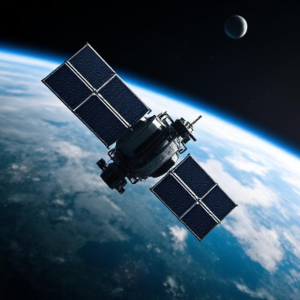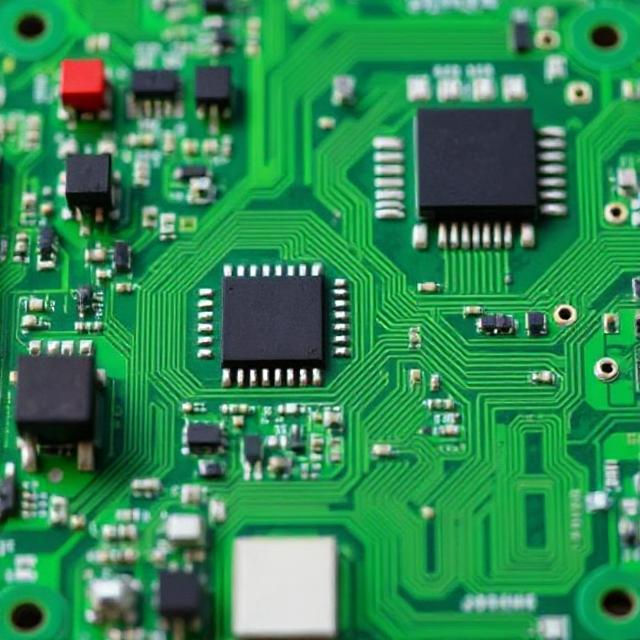A communication satellite is a special type of satellite in space that helps people communicate over long distances. These satellites relay signals between Earth and different parts of the world, enabling services like television, phone calls, and internet access. Communication satellites are crucial for modern communication. They help us make phone calls, watch TV, access the internet, and more. By being in different orbits (GEO, LEO, and MEO), these satellites can provide coverage for people around the world. Even though they have some challenges, they make global communication possible, especially in areas where other systems aren’t available.

What is a Communication Satellite?
A communication satellite is a device that orbits Earth and acts as a relay station for signals. When you send a message, make a call, or watch TV, the signals are sent through the atmosphere and then bounced off a satellite in space before being received by another device or station on Earth.
Here’s a simple example:
Imagine you’re watching a live event on TV. The camera at the event sends a signal to a satellite. The satellite sends that signal back down to Earth, and it reaches your TV so you can watch the event in real time.
How Do Communication Satellites Work?
Communication satellites work by receiving signals from Earth (like a phone call or TV broadcast), amplifying them, and then sending them back to Earth to a different location. This process happens in just a few seconds.
Here’s a step-by-step explanation:
- Sending the signal: A device on Earth, such as a TV station or a phone, sends a signal to a satellite in space.
- Amplifying the signal: The satellite receives the signal, boosts it to make it stronger, and then sends it back toward Earth.
- Receiving the signal: The signal travels back down and is received by another device or station on Earth (like your home TV or a phone antenna).
Orbits of Communication Satellites
Satellites don’t just float randomly in space. They are placed in specific orbits around Earth. An orbit is the path a satellite follows as it moves around the Earth. There are different types of orbits, and each one serves a different purpose.
Here are the main types of orbits used by communication satellites:
- Geostationary Orbit (GEO):
This is the most common orbit used by communication satellites. A satellite in geostationary orbit orbits at the same speed as Earth’s rotation, so it stays in the same spot in the sky.Why it’s useful: Since the satellite always stays in the same position, antennas on the ground can point to the same spot without moving.Height: About 35,786 kilometers (22,236 miles) above Earth. - Low Earth Orbit (LEO):
LEO satellites orbit much closer to Earth, usually at an altitude of 500 to 2,000 kilometers (311 to 1,242 miles).Why it’s useful: LEO satellites are ideal for services like internet and phone communication because they have lower latency (less delay in signal transmission).Challenge: LEO satellites move quickly across the sky, so they require more satellites to cover a large area. - Medium Earth Orbit (MEO):
MEO satellites orbit at a medium distance from Earth, around 10,000 to 20,000 kilometers (6,200 to 12,400 miles).Why it’s useful: MEO satellites are often used for navigation systems like GPS. They provide a good balance between coverage and speed.
Uses of Communication Satellites
Communication satellites have many important uses in our daily lives. Here are some of the main uses:
- Television Broadcasting:
Satellites are used to broadcast TV signals from stations to your home. They enable satellite TV services like Dish Network or DirecTV. - Internet Access:
In remote areas where it’s difficult to lay cables, satellites can provide internet access. This is especially useful in rural areas or places like ships, airplanes, and remote islands. - Phone Calls:
Communication satellites enable global phone calls, even to the most isolated areas of the world. They allow people to stay connected no matter where they are. - Weather Monitoring:
Satellites are used to monitor the weather. They provide important data about storms, temperature, and climate, which helps meteorologists forecast the weather. - Military Communication:
Satellites are also used by governments and military organizations for secure communication and surveillance. - Global Navigation Systems:
Satellites help provide GPS navigation, which we use for directions in our cars, phones, and even airplanes.
Advantages of Communication Satellites
- Global Coverage:
Satellites can provide coverage to even the most remote and hard-to-reach areas of the world, such as oceans, deserts, and mountains. - Reliability:
Satellites are highly reliable because they don’t depend on cables or physical infrastructure on Earth. This makes them great for areas where terrestrial networks are not available. - Speed:
Satellites can send signals quickly, especially for services like live TV broadcasts or phone calls across the world.
Challenges of Communication Satellites
- Cost:
Building, launching, and maintaining communication satellites is expensive, which can make satellite services more costly compared to ground-based systems. - Latency:
For satellites in geostationary orbit, the signals have to travel a long distance to and from Earth, which can cause a slight delay or latency in communication. This is less of an issue with LEO satellites, which are closer to Earth.











